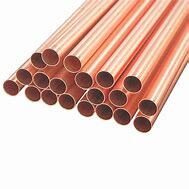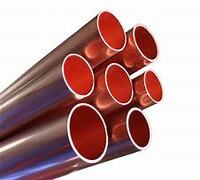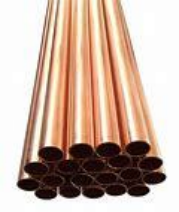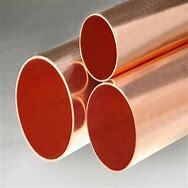In the intricate and high-stakes world of building construction, the integrity of water and electrical systems is non-negotiable. These systems form the hidden circulatory and nervous systems of a structure, and their failure can lead to catastrophic and costly consequences. At the heart of a reliable plumbing and electrical protection network lies a quintessential material: the Copper Pipe. While often perceived as a simple commodity, the quality of copper pipes varies dramatically, making the selection process a paramount decision for engineers, contractors, and project managers. This guide delves beyond the surface, offering an indispensable roadmap for selecting superior copper pipes by exploring their fundamental properties and revealing a critical, often overlooked, selection pitfall.
1. What are Copper Pipes?
A Copper Pipe is far more than a mere tube; it is a precision-engineered conduit, meticulously manufactured from high-purity copper. It is designed to provide a durable, safe, and long-lasting pathway for the conveyance of water, gases, and in the case of electrical systems, to serve as a robust protective raceway for cables. Through centuries of proven performance, copper pipes have established themselves as the cornerstone of modern building infrastructure, offering an unassailable blend of reliability, safety, and efficiency that cheaper alternatives struggle to match.

2. The Formidable Core Characteristics of Copper Pipes
The preternatural suitability of copper for building systems is born from a suite of intrinsic properties that make it a formidable choice for critical installations.
2.1 A Pantheon of Physical Prowess
The physical attributes of copper are truly astounding and form the bedrock of its utility.
Superb Ductility and Malleability: Copper can be easily bent, formed, and shaped without fracturing, allowing for intricate installation routes with fewer joints. This reduces potential leak points and saves on installation time and fitting costs.
Exceptional Thermal Conductivity: This property is a double-edged sword, but in the context of water systems, it enables rapid heat transfer, making copper pipes ideal for hot water circulation and heating systems, ensuring energy-efficient performance.
Impressive Tensile Strength: While ductile, copper possesses significant strength, allowing it to withstand high internal water pressures and external mechanical stresses, ensuring system longevity.
Inherent Corrosion Resistance: Copper forms a protective patina layer when exposed to the atmosphere, which acts as a shield, drastically slowing down further corrosion and preserving the pipe’s wall integrity for decades.
2.2 Unrivaled Functional Tenacity
The synergy of physical properties bestows unparalleled functional benefits that directly impact building performance and safety.
Biostatic Properties: This is a remarkable and critical feature. Copper surfaces inhibit the growth of bacteria and biofilms, including legionella, ensuring a safer and hygienic potable water supply—a non-negotiable requirement for hospitals, schools, and residential buildings.
Longevity and Service Life: A correctly installed copper piping system can reliably outlast the building itself, often providing unwavering service for over 50 years with zero maintenance.
Fire Resistance: Copper is non-combustible and will not burn or support combustion. When used as electrical conduit, it provides a superior level of fire protection compared to plastic alternatives, helping to contain fires and prevent the spread of toxic fumes.
Recyclability: At the end of its long service life, copper retains 100% of its value and can be recycled indefinitely without any loss of performance, making it an exemplary choice for sustainable construction.

3. A Candid Appraisal: The Merits and Limitations
A balanced perspective is essential for making an informed material selection.
3.1 The Compelling Myriad of Advantages
The benefits of specifying copper pipes are overwhelmingly persuasive.
Proven Durability and Reliability: Its long history of performance provides unparalleled confidence in its ability to perform as expected for generations.
Superior Water Quality Maintenance: The biostatic and non-permeable nature of copper guarantees the delivery of clean, uncontaminated water.
Enhanced Safety: Its non-combustible nature makes it the safest choice for electrical conduits and plumbing in fire-sensitive applications.
Excellent Return on Investment: While the initial cost may be higher, the combination of zero maintenance, longevity, and system reliability makes it the most cost-effective solution over the lifecycle of a building.
3.2 The Pragmatic Acknowledgment of Drawbacks
While formidable, copper is not without its considerations.
Higher Initial Material Cost: The upfront cost of copper pipe is significantly higher than that of plastic alternatives like PEX or PVC.
Potential for Theft: The high scrap value of copper can make construction sites targets for theft if materials are not securely stored.
Susceptibility to Acidic Water: In installations with a consistently low pH, corrosion can be accelerated, though this is a relatively rare scenario and can be mitigated with proper water treatment.

4. The Expansive Domain of Applications
The utility of copper pipes is instrumental across a broad spectrum of building systems.
Potable Water Systems: The gold standard for cold and hot water distribution in residential, commercial, and institutional buildings.
Hydronic Heating and Cooling Systems: Used in radiators, underfloor heating, and chilled water cooling circuits.
Medical Gas Piping: The mandatory choice for delivering oxygen, nitrous oxide, and other medical gases in hospitals due to its cleanliness and reliability.
Fire Sprinkler Systems: Its melting point of 1085°C provides critical resistance in a fire event.
Electrical Conduits: Offers superior mechanical protection for cables and is essential in areas where fire codes restrict the use of plastic conduits.

5. The Quintessential Selection Guide: 3 Key Criteria and 1 Pervasive Misunderstanding
Navigating the market for copper pipes requires a discerning eye. Here are the three non-negotiable criteria for quality, followed by a widespread misconception you must avoid.
5.1 The 3 Key Criteria for Selection
Material Purity and Temper Designation: The Foundation of Performance.
Do not just ask for “copper pipe.” Demand high-purity, C12200 alloy (also known as DHP – Deoxidized High Phosphorus) for plumbing, which contains a small phosphorus addition for superior welding and brazing characteristics. Furthermore, specify the temper. Annealed (soft temper) pipe is flexible for bending, while Drawn (hard temper) pipe is rigid and used for straight runs. Using the wrong temper complicates installation and can lead to work-hardening and cracking.
Dimensional Consistency and Wall Thickness: The Hallmark of Precision.
Scrutinize the pipe’s dimensions. High-quality copper pipe will have a perfectly consistent outer diameter and a uniform wall thickness as per international standards like ASTM B88 for plumbing or EN 1057. Variations can cause poor fit-up during brazing or soldering, creating weak joints that are prone to failure. Insist on certification from the manufacturer confirming compliance with the relevant standard’s dimensional tolerances.
Internal Cleanliness and Certification: The Guarantee of Integrity.
For plumbing applications, the internal surface must be clean and free of drawing lubricants, oxides, and metallic debris. Many premium manufacturers cap the ends and purge the pipes with an inert gas to prevent oxidation. Always request pipes that come with a Mill Test Certificate (MTC) or Certificate of Conformity, which provides a verifiable record of the material’s composition, mechanical properties, and compliance with the required standard. This is your ultimate proof of quality.
5.2 The 1 Common Misunderstanding: “Weight = Quality”
The Misconception: A pervasive and disastrous myth in the market is that a heavier copper pipe is automatically a better, thicker-walled pipe.
The Reality: This is a dangerous oversimplification. The weight of a coil or length of pipe is influenced by both its wall thickness and its length. Unscrupulous suppliers have been known to supply pipes that are slightly shorter than the standard length, making them lighter, or conversely, to add filler materials to the packaging to inflate the gross weight.
The Intelligent Approach: Do not rely on weight. The only reliable method to verify wall thickness is to use a ultrasonic thickness gauge directly on the pipe. Furthermore, always cross-check the actual length of the pipes or coils received against the purchase order. Your trust should be placed in the manufacturer’s certification and your own verification of dimensions, not on a scale.
6. Conclusion: An Investment in Built Environment Integrity
Selecting high-quality copper pipes is a critical decision that impacts the safety, efficiency, and longevity of a building for decades. By focusing on the paramount criteria of material purity, dimensional consistency, and certified cleanliness—while decisively rejecting the misleading weight myth—you empower yourself to make an unassailable choice. This disciplined, knowledge-based approach not only protects your project from the high costs of premature failure but also ensures the creation of a reliable and valuable built asset. Specify with confidence, install with precision, and build for the future.
About CopperGroup
CopperGroup is a trusted global Copper Pipes supplier & manufacturer with over 12 years experience in providing super high-quality copper and relative materials. The company export to many countries, such as USA, Canada,Europe,UAE,South Africa, etc. As a leading nanotechnology development manufacturer, CopperGroup dominates the market. Our professional work team provides perfect solutions to help improve the efficiency of various industries, create value, and easily cope with various challenges. If you are looking for Copper Pipes, please feel free to contact us.
Tags: copper tubing,15mm copper pipe,22mm copper pipe

